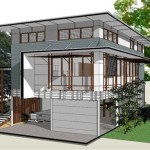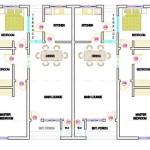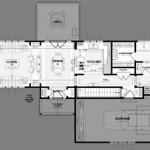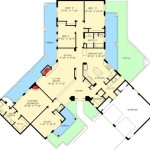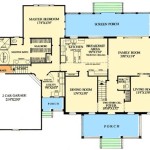Design A House Floor Plan
Designing a house floor plan is an exciting and essential step in the homebuilding process. A well-designed floor plan can create a comfortable, functional, and aesthetically pleasing living space. Here are the steps to design a house floor plan.
1. Determine Your Needs and Budget
Before you start designing, it's important to determine your needs and budget. Consider the number of bedrooms, bathrooms, and other rooms you need. Think about your lifestyle and how you want to use the space. Set a realistic budget that includes the cost of materials, labor, and permits.
2. Research Different House Styles
Explore different house styles to find one that suits your taste and needs. Consider the architectural features, exterior materials, and overall design aesthetic. Research online, visit model homes, and consult with architects or builders to learn about different styles.
3. Create a Sketch
Start by sketching out a rough floor plan on paper. Include the basic layout of the rooms, doors, and windows. Don't worry about making it perfect at this stage; the goal is to get your ideas down on paper.
4. Use Floor Plan Software
There are many free and paid floor plan software programs available online. These programs allow you to create more detailed and accurate floor plans. Experiment with different layouts, room sizes, and furniture arrangements to find the best design.
5. Consider Space Allocation
Divide the available space in a way that meets your needs. Allocate space for bedrooms, bathrooms, kitchen, living room, and other areas. Consider the size, shape, and natural light of each room.
6. Plan the Flow of Traffic
The flow of traffic is crucial for a functional floor plan. Minimize traffic congestion by creating clearly defined paths between rooms. Avoid creating dead-end hallways or bottle-necks.
7. Position Windows and Doors
Windows and doors provide natural light, ventilation, and access to the outdoors. Plan their locations carefully to maximize natural light, create views, and enhance privacy.
8. Think About Storage
Incorporate adequate storage space into your floor plan. Consider closets, pantries, built-in shelves, and other storage solutions to keep your home organized and clutter-free.
9. Pay Attention to Details
Once you have the basic layout, pay attention to details such as ceiling heights, moldings, and other architectural features. These details can add character and style to your home.
10. Review and Revise
After completing your floor plan, take a step back and review it carefully. Ask for feedback from family, friends, or a professional designer. Make revisions as needed to ensure that the plan meets your needs and creates the home you envision.

House Plans How To Design Your Home Plan

Floor Plans Types Symbols Examples

Small House Design 2024005 Pinoy Eplans Modern Plans Floor

Small House Design Shd 2024007 Pinoy Eplans One Y Bungalow Plans Layout

28 Modern House Designs Floor Plans And Small Ideas

House Plans How To Design Your Home Plan

Check Out These 3 Bedroom House Plans Ideal For Modern Families

Est House Plans To Build Simple With Style Blog Eplans Com

Two Y House Phd 2024011 Home Design Floor Plans Double

Creating The Perfect Floor Plan Quarry View Building Group

